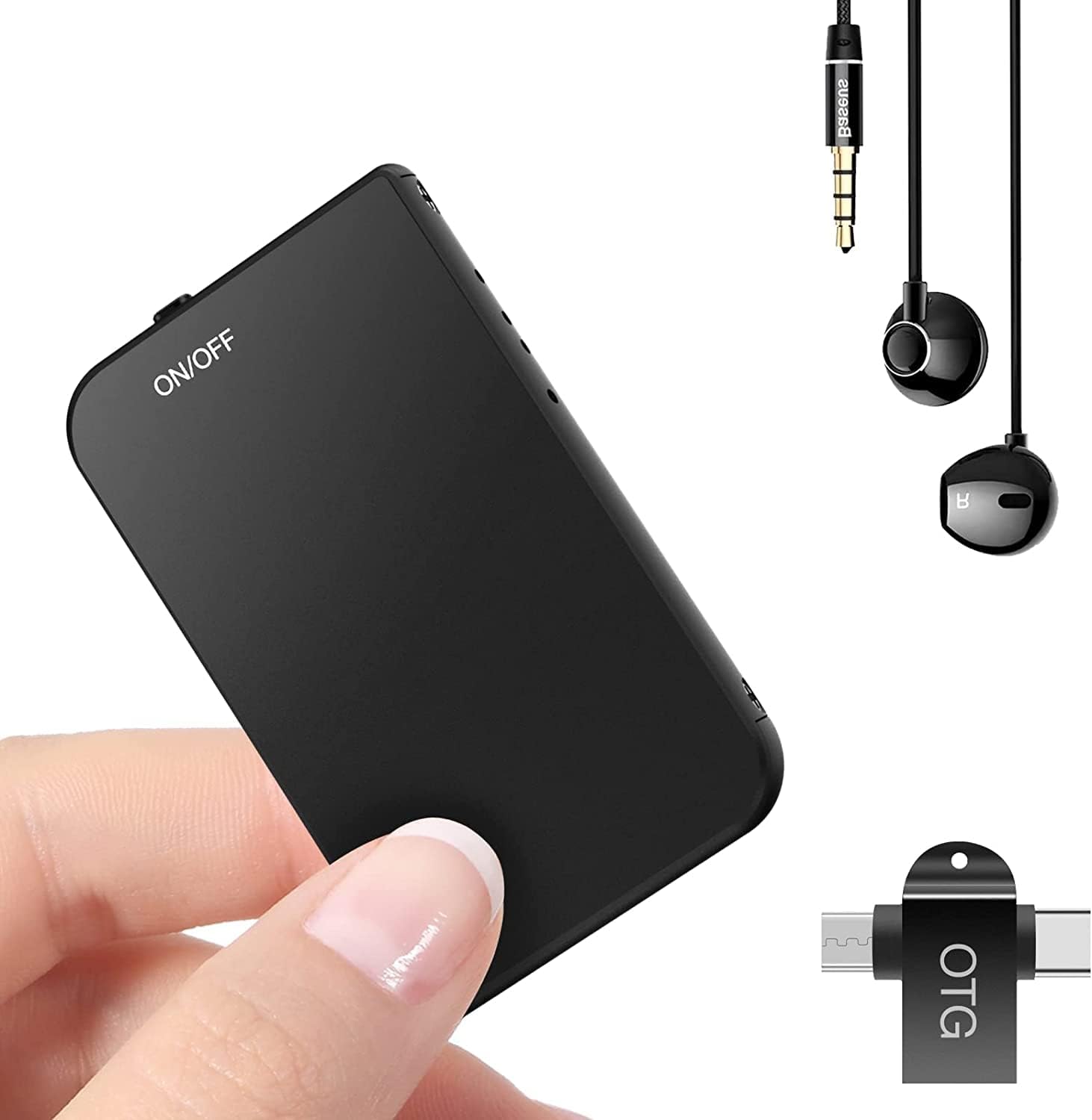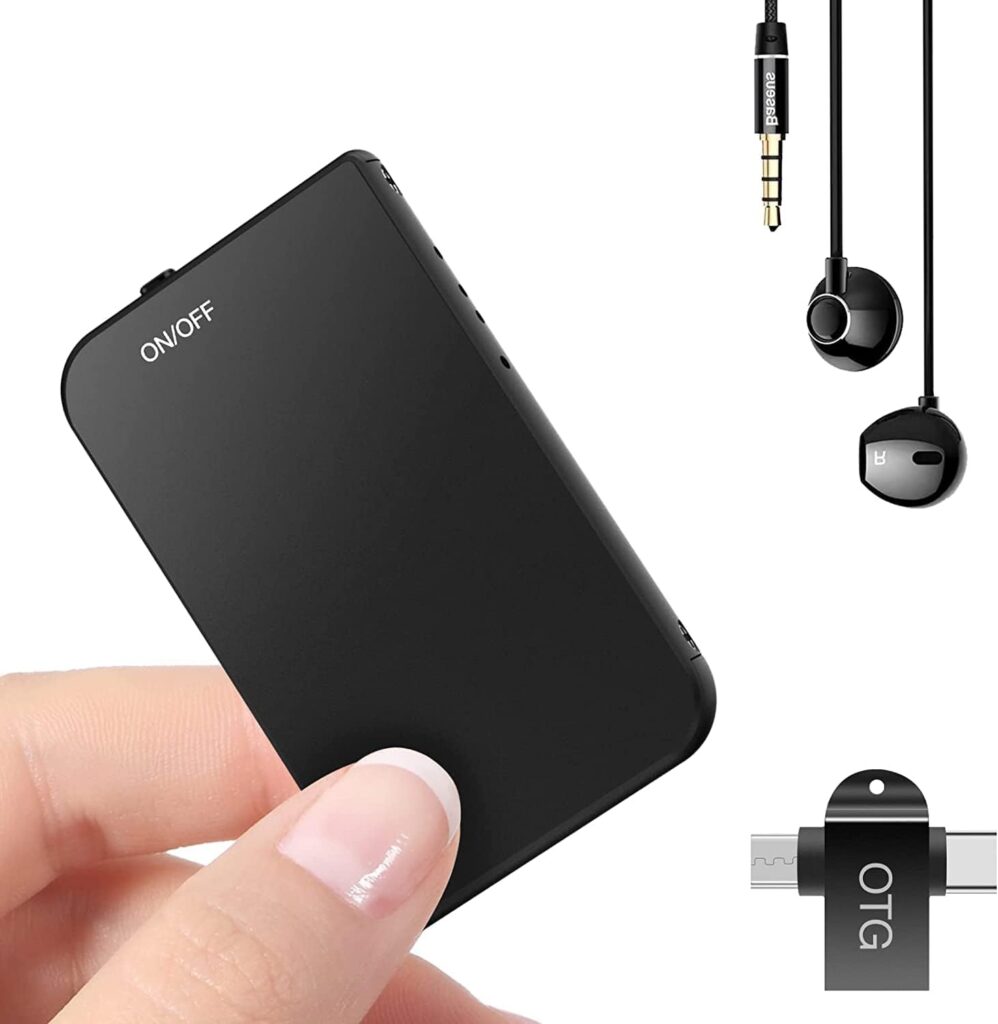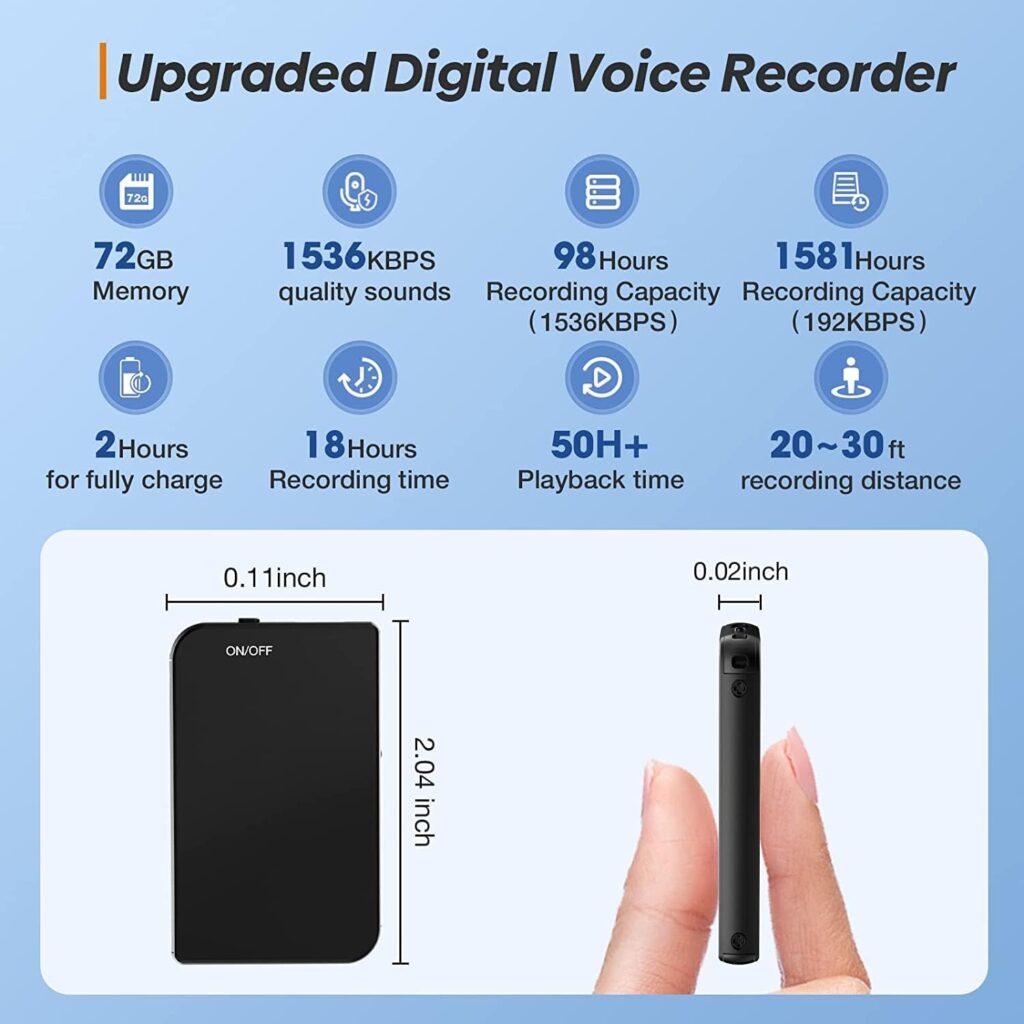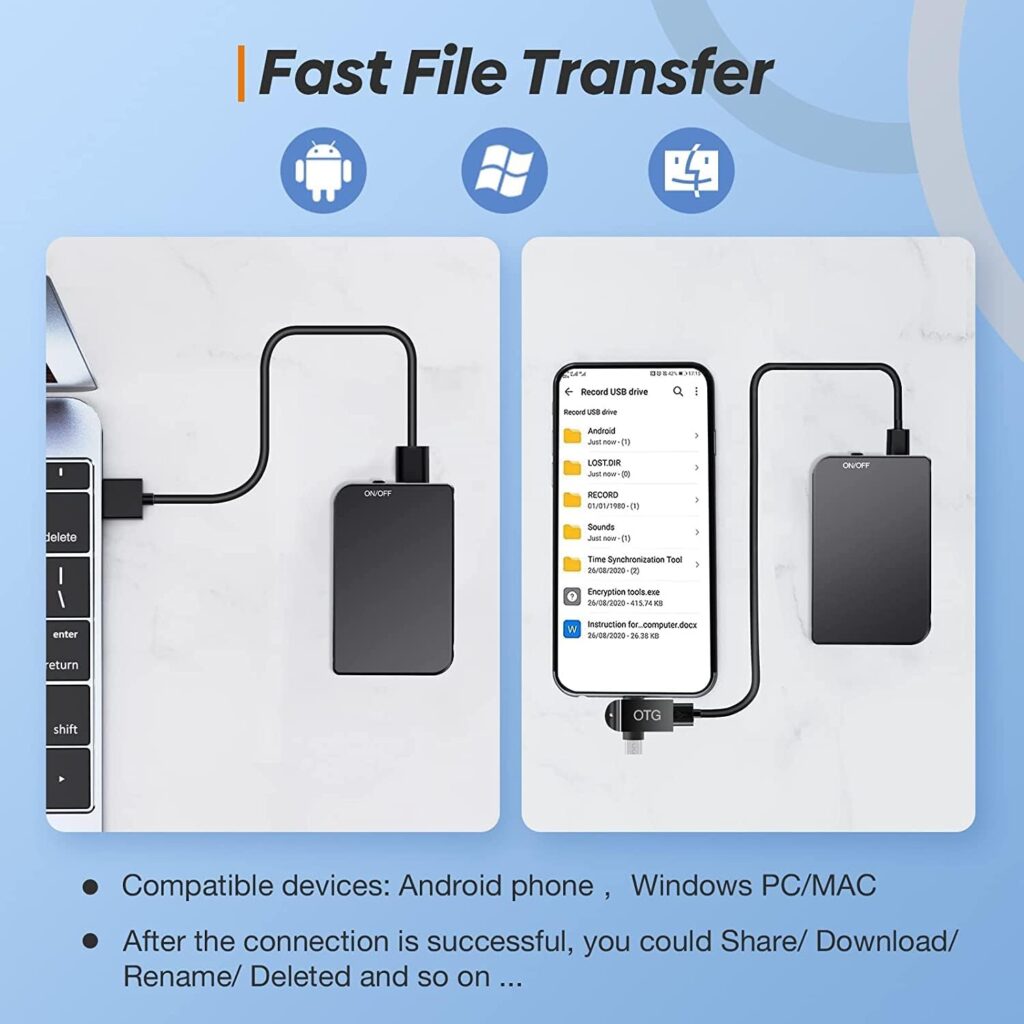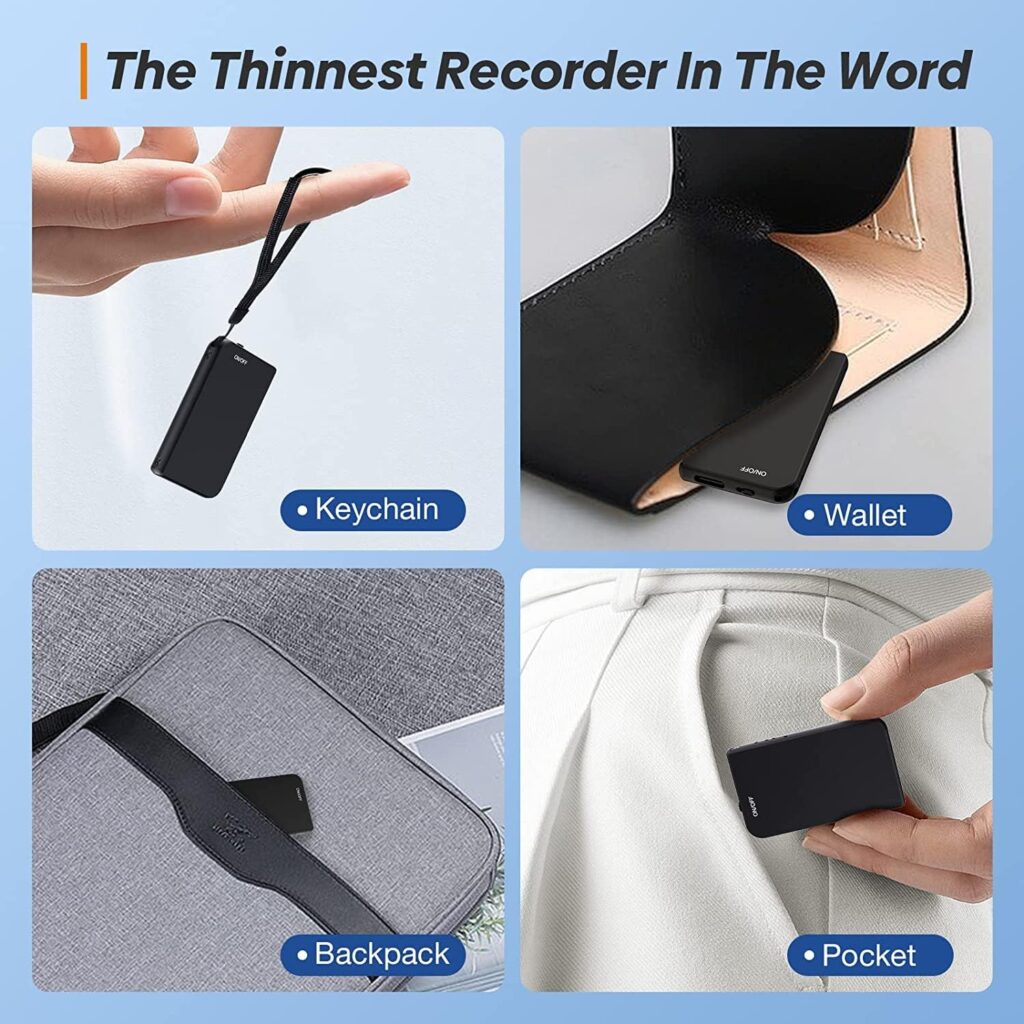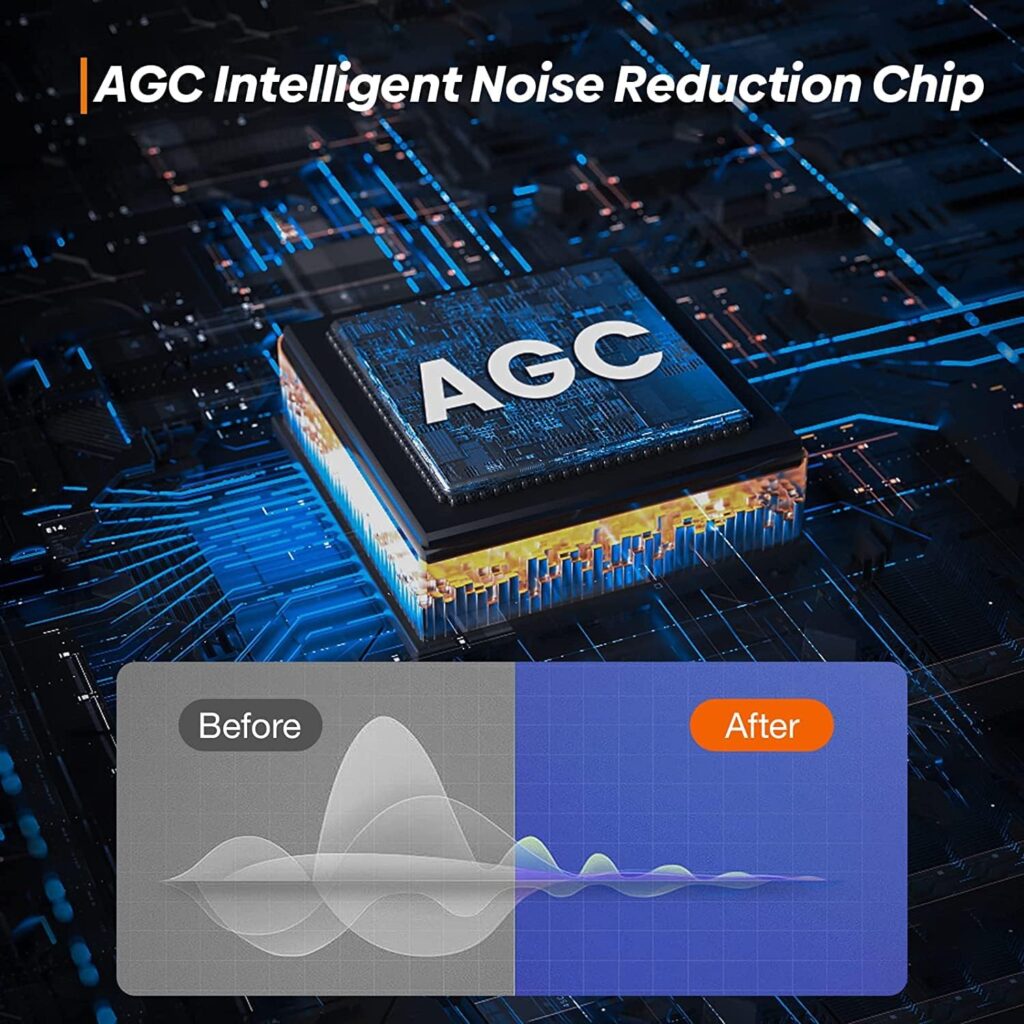Are you in need of a high-quality voice recorder that offers impressive capacity and long battery life? Look no further than the 72GB Digital Voice Recorder 1581H. It boasts an impressive 18 hours of continuous recording time and 54 hours of playback time, thanks to its rechargeable battery. Equipped with an AGC intelligent noise reduction chip, this recorder filters out unwanted background noise, providing you with crystal-clear sound. It also features a voice-activated recording function, ensuring that you only capture essential audio. Compatible with a range of devices, including phones, PCs, and Macs, this recorder is portable and easy to use. With an included gift rope, it can be conveniently carried anywhere you go. Need help with the operation? Our package includes instructions and operation videos, and should you have any further queries, our 24-hour online support is always available to assist you.
Why Consider This Product?
Looking for a high-quality digital voice recorder that can meet all your recording needs? Look no further than the 72GB Digital Voice Recorder 1581H! With its impressive recording capacity, long battery life, noise reduction technology, and voice-activated features, this recorder is a must-have for students, professionals, teachers, businessmen, and anyone who loves to record.
This product has been designed to offer exceptional sound quality, with a bit rate that supports 192~1536kbps, resulting in crystal-clear audio recordings. The size of the bit rate determines the recording storage capacity, ranging from 85 to an impressive 1581 hours. With such a vast storage capacity, you can record hours and hours of lectures, meetings, interviews, and more without worrying about running out of space.
The 18-hour recording time and 54-hour playback time ensure that you never miss a moment. The built-in 350mAh rechargeable battery can easily be charged within 2 hours, providing you with ample recording and playback time. Whether you have a lengthy lecture or need to review recorded material for an extended period, this voice recorder has you covered.
Features and Benefits
Superior Sound Quality
With a bit rate of 192~1536kbps and a sampling frequency of 48KHZ, this voice recorder delivers exceptional sound quality. You’ll be able to capture every nuance of the speaker’s voice, as if they were standing right beside you.
Noise Reduction Technology
The AGC intelligent noise reduction chip built into this voice recorder ensures that your recordings are free from unwanted background noise. This technology effectively cancels out external distractions, allowing you to focus on the speaker’s voice and capture clear recordings.
Long-Distance Recording and Sensitivity Adjustment
The 72GB Digital Voice Recorder 1581H allows for long-distance recording in a quiet environment, with a range of 20-30ft. Additionally, the recording sensitivity is adjustable, ranging from 27db to 34db. These features ensure that your recordings are clear and accurate, even when the speaker is further away.
Voice Activated Recorder with Playback
The voice-activated function of this recorder is a game-changer. You can set the voice decibels at 7 different levels, ensuring that the recorder only starts recording when sound reaches a certain threshold. This not only saves battery life but also eliminates unnecessary silent portions in your recordings.
Product Quality
The 72GB Digital Voice Recorder 1581H is a high-quality product that has been built to last. Its durable design ensures that it can withstand the rigors of everyday use. Additionally, the included high-quality headphones provide an immersive listening experience, allowing you to fully enjoy your recordings.
What It’s Used For
Record Lectures
This voice recorder is perfect for students and educators who want to capture every detail of their lectures. With its extensive recording capacity and long battery life, you can record multiple lectures without worrying about running out of space or battery power.
Business Meetings
Use the 72GB Digital Voice Recorder 1581H to record important business meetings and discussions. It allows you to refer back to the recordings to ensure accuracy in your notes and to capture any missed information.
Interviews and Podcasts
If you are conducting interviews or recording podcasts, this voice recorder is an indispensable tool. Its noise reduction capabilities ensure that your recordings are of the highest quality, and its long battery life allows for extended recording sessions.
Personal Use
Whether you want to record your thoughts, ideas, or personal conversations, this voice recorder is perfect for personal use. Its lightweight and portable design make it easy to carry with you wherever you go, ensuring that you never miss an important moment.
Product Specifications
| Capacity | 72GB |
|---|---|
| Sound Quality Bit Rate | 192~1536kbps |
| Recording Storage | 85~1581 hours |
| Recording Time | 15~18 hours |
| Playback Time | 54 hours |
| Battery Capacity | 350mAh |
| Charging Time | 2 hours |
| Recording Distance | 20-30ft |
| Recording Sensitivity | 27db-34db |
| Compatible Devices | Android phone, Windows PC/MAC |
Who Needs This
The 72GB Digital Voice Recorder 1581H is a versatile product that can be used by a wide range of individuals. Whether you’re a student, professional, teacher, businessman, or someone who loves to record, this voice recorder is a great investment. It caters to the needs of anyone who requires high-quality, reliable, and efficient voice recording capabilities.
Pros and Cons
Pros:
- Impressive recording capacity
- Exceptional sound quality
- Long battery life
- Noise reduction technology
- Voice-activated function
- Portable and lightweight design
Cons:
- May require close proximity to the sound source for optimal recording quality
- Limited compatibility with devices other than Android, Windows PC, and MAC
FAQ’s
- How do I adjust the recording sensitivity?
- The recording sensitivity can be adjusted within a range of 27db to 34db. Please refer to the instruction manual for specific instructions.
- Can I transfer recordings to my computer?
- Yes, you can easily transfer files to your computer using the Type-C port. Simply connect the recorder to your computer using the supplied Type-C cable.
- Can I delete and rename recording files?
- Yes, you have full control over your recordings. You can delete, rename, and share files directly from the voice recorder or via your computer.
- Is the voice recorder compatible with smartphones?
- Yes, the voice recorder is compatible with Android phones. You can easily connect and transfer files between your phone and the recorder.
What Customers Are Saying
Customers who have purchased the 72GB Digital Voice Recorder 1581H have praised its exceptional sound quality, ease of use, and long battery life. Many customers have found it to be a valuable tool for capturing lectures, meetings, and personal recordings.
One customer mentioned, “I purchased this voice recorder for my college lectures, and I am extremely satisfied with its performance. The sound quality is crystal clear, and the long battery life allows me to record multiple lectures without worrying about recharging. Highly recommended!”
Overall Value
The 72GB Digital Voice Recorder 1581H offers excellent value for money. With its impressive recording capacity, high-quality sound, noise reduction technology, and extended battery life, this voice recorder is a valuable tool for anyone in need of reliable and efficient voice recording capabilities.
Tips and Tricks For Best Results
- Keep the voice recorder as close to the sound source as possible for optimal recording quality.
- Avoid colliding or rubbing the recorder with other objects to minimize background noise.
- Read the manual carefully to understand all the functions and settings of the voice recorder.
Final Thoughts
Product Summary
The 72GB Digital Voice Recorder 1581H is a versatile and powerful tool that offers exceptional sound quality, impressive recording capacity, and long battery life. Its noise reduction technology, voice-activated function, and compatibility with various devices make it an ideal choice for students, professionals, teachers, and anyone who loves recording.
Final Recommendation
If you are in need of a reliable, high-quality digital voice recorder, look no further than the 72GB Digital Voice Recorder 1581H. Its impressive features, ease of use, and exceptional sound quality make it a valuable investment. Capture every moment with clarity and precision – choose the 72GB Digital Voice Recorder 1581H.
Disclosure: As an Amazon Associate, I earn from qualifying purchases.
